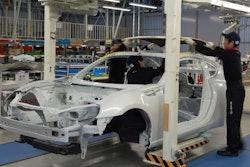Single-Lens 4D Camera
Researchers at Stanford University and UC San Diego have developed a 4D camera that will greatly enhance robotic vision. The new 4D camera is being touted as the first-ever single-lens, wide field of view, light field camera. It uses a spherical lens and algorithms to capture information across a 138-degree field of view. The hope is that the camera will allow robots to not only navigate their surroundings, but also have a better understanding their environment.
The lenses used in the new system were originally designed for DARPA and were produced to provide a field of view encompassing nearly a third of the camera’s circle to create 360-degree images.
The new camera does away with fiber bundles in favor of a combination of lenslets developed by UC San Diego and digital signal processing and light field photography technology developed by Stanford. Combing these technologies is what the team say gives the camera a "fourth dimension."
The system is currently a proof-of-concept device, but the researchers believe that eventually it will help robots to navigate in small areas, land drones, aid self-driving cars, and enable augmented virtual reality systems. Up next, the team will look to install a more compact prototype in an actual robot.
SO, WHAT DO YOU THINK?
Will this 4D camera lead to better navigation? How would such a system aid in automation? Tell us what you think by leaving your comments below.
New Surface Gives Shellfish The Slip
The attachment of barnacles, mussels and seaweeds — or biofouling — can significantly increase drag on ships and increase fuel consumption. It’s estimated that more than $5 billion is spent annually to control marine biofouling, $1 billion by the U.S. Navy alone.
But a new discovery may help reduce the costs and downtime associated with biofouling. An international team of scientists have tested two types of Slippery Liquid-Infused Porous Surfaces (called SLIPS) and discovered mussels, and other biofouling critters, don’t stick to the surface.
A field test in the Atlantic Ocean showed that the oil-infused materials had 1/13th the amount of mussels on them compared to surfaces treated with commercial coatings. The few mussels that did attach were also easier to remove.
Scientists say the SLIPS coating lubricant layer interferes with the mussel’s ability to detect the solid surface beneath it. Currently the material is being tested in five high-biofouling locations around the world, so far it has held up for two years.
SO, WHAT DO YOU THINK?
Do you think this material could be the solution to the biofouling problem as researchers claim? In what other applications could SLIPS be used? Tell us what you think in the comments below.






















